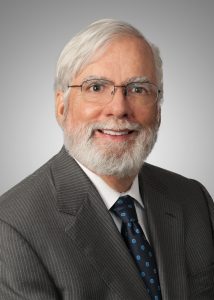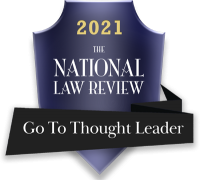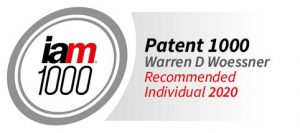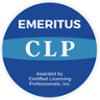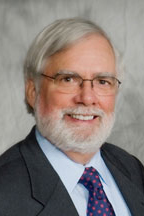Earlier this year, the Supreme Court issued orders to the Solicitor General to weigh in on whether or not the Court should grant cert. in two high profile Fed. Cir. decisions: Hikma Pharm. USA Inc, v. Vanda Pharm. Inc., No. 18-817, and HP Inc. v. Berkheimer (18-415). The SG has responded by filing two amicus briefs to the Court. Each brief argues that cert. should be denied since, in the SG’s opinion, both Vanda and Berkheimer were correctly decided. The SG’s opinions argue that, in the case of Vanda, methods of medical treatment have long been found to be patent eligible (Vanda) and that the question presented in Berkheimer – whether or not s. 101 inquiries involve questions or law or of fact – is not ripe for consideration, since the parties are still arguing over whether or not the invention is patent-eligible in the first place.
However while urging the court to deny cert., the SG presented an alternative approach. In Vanda, the SG argued that Vanda’s petition should be held if the S. Ct. grants cert. in Athena v. Mayo. Likewise, while recommending that the S. Ct. deny cert. in Berkheimer, the SG alternatively proposed that the petition should be held if the Court grants cert. in Athena. Both briefs duplicate their arguments about the history of patent-eligibility (“PE’) and both briefs argue that the S. Ct. disregarded decades of precedent in deciding Bilski and Prometheus v. Mayo. The departure from precedent is described in the Vanda brief:
“The Court likewise [to “machine, manufacture and composition of matter] has interpreted “process” in Section 101 based on traditional usage of that term and its precursor (“art”) in the patent context. It took as its touchstone ‘[i]ndustrial processes’ of ‘the types which have historically been eligible to receive protection of our patent laws.’ That approach aligned with the placement of ‘process’ (or ‘art’) alongside ‘machine,’ ‘manufacture,’ and ‘composition of matter.’…It also avoided the ‘comical’ result that Section 101 would encompass ‘[a] process for training a dog, a series of dance steps, [or] a method of shooting a basketball.’ Bilski, 561 at 24.”
“The Court’s recent decisions, however have applied a different approach. In Bilski, the Court held that patent claims for a method of hedging financial risk in energy markets were not patent eligible under Section 101. But the Court did not ground that conclusion in traditional patent law understandings of the term ‘process’, or in the Framers’ conception of the ‘useful arts’. It stated that ‘process’ and Sections 101’s other terms should bear their general purpose ‘dictionary definitions’ but that Section 101 is nevertheless limited by three ‘exceptions’ that ‘are not required by the statutory text: ‘laws of nature, physical phenomena, and abstract ideas.’”
The brief goes on to quote extensively from Prometheus v. Mayo and describes the rise of the Mayo/Alice test. The Section of the brief discussing the facts and opinions in Vanda begins: “This case concerns claims for methods of using human-made drug to treat medical conditions” that became involved in Hatch-Waxman litigation with Hikima. The brief notes that the Fed. Cir. Denied rehearing en banc. The heart of the brief is in the Discussion section, so you can jump straight to page 8 if you are familiar with the history of Vanda.
The SG first argues that the Fed. Cir. “correctly held that the relevant claims of Vanda’s patent constitute patent-eligible subject matter under [101]. Those claims encompass methods of medical treatment. Historically such methods were well-understood to be patent eligible. The brief continues:
“Language [in Mayo] indicates that the Court did not intend to overturn the well-settled understanding that method of medical treatment claims typically are [PE]. But the decision’s logic arguably implies the opposite. … Although Mayo is the most immediate source of confusion, the uncertainty stems from the broader framework articulated in the Court’s recent 101 decisions. The Court’s reconceptualization in [Bilski] of inherent, long-recognized limitations on Section 101’s affirmative scope as freestanding, atextual ‘exceptions’ has given rise to an array of difficult questions. The confusion created by this Court’s recent section 101 precedents warrants review in an appropriate case.”
The brief goes on to take a hard look at the Mayo decision and found it wanting in a number of respects. Firstly, that it simply ignores the ample precedent that method of medical treatment claims are patent eligible. Even if the Mayo opinion intended to affirm the patentability of methods of medical treatment, it is unclear how this rule “can be reconciled with mechanical application of Mayo’s two-step framework.” The brief argues that Mayo applied a “new and capacious understanding of patent-ineligible ‘laws of nature.” It identified the natural law claims by the patent as “relationships” expressed in precise mathematical terms, “between concentrations of certain metabolites in the blood and the likelihood that a dosage of a thiopurine drug will prove ineffective or cause harm.” The brief continues:
“First, the Mayo Court concluded for the first time that a phenomenon can be a law of nature even if it exists because of, not apart from, human invention. …This Court and others had viewed as PE under 101 and its statutory predecessors process that depend on natural phenomena but also involve human intervention [citing Diehr]….The Mayo Court departed from that prior usage by describing as ‘laws of nature’ biological responses of the human body to conditions that arise solely from human intervention.
Secondly, the brief argues that “the Mayo Court defined the natural law it identified at an extremely high level of specificity….That highly particularized relationship contrasts starkly with laws of nature the Court had previously identified, such as Newton’s ‘law of gravity’ [citing Chakrabarty]….When highly specific relationships of that sort [in Mayo] are treated as laws of nature, it becomes more difficult for a patent applicant to show that its invention goes substantially beyond an instruction to ‘apply the law.” The brief argues that even Vanda’s particularized treatment steps could easily have failed the Mayo/Alice test because “it is not independently new.” The brief continues: “Indeed, it is arguably unclear whether even a method of treating a disease with a newly created drug would be deemed patent-eligible under a mechanical application of Mayo[/Alice] two-part test.”
The brief reviewed the differences in opinion that arose when Vanda reached the Fed. Cir. Diagnostic claims, such as Athena’s, are not directly addressed, but the brief alludes to the present uncertainty in this area, citing Ariosa, in which Judge Lourie opined that “a crisis of patent law and medical innovation may be upon us,” and that was written nearly 10 years ago. The brief then reviews the Mayo/Alice test as encompassing even natural phenomena that use, rest upon, reflect or apply laws of nature that can occur only through human intervention in Step 1: “If an inventor’s dependence on one of those concepts were fatal, untold numbers of innovations would be patent ineligible.”
Step 2 of the Mayo/Alice test does not fare better. It is noted as “similarly ambiguous” and lists seven attempts to define the role of the supporting claims, without ever mentioning the lack of definition of “inventive concept.” The brief also notes that the Court’s description of the second step causes its requirements, whatever they are, to overlap with sections 101 and 103. This encompasses ignoring the well-settled law that the novelty of process steps is irrelevant to PE, as well as the precedent requiring that a claim be considered as a whole. The SG makes the final point that Section 101 should not be interpreted using “atextual exceptions”, e.g., expanded to the point where it nullifies the constitutional mandate to promote science and the useful arts.

